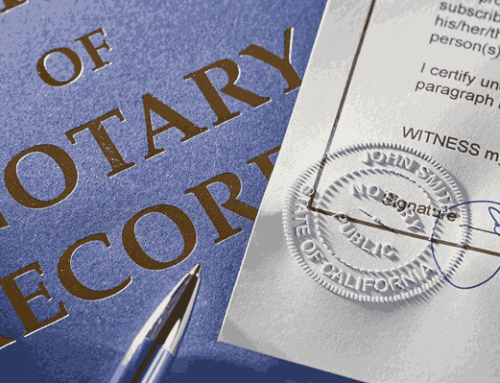Gartner experts expect legal departments to increase their spending on legal technology threefold by 2025. Organizations’ legal departments continually grapple with managing intricate matters, regulatory compliance, contracts, and numerous legal responsibilities. To navigate these challenges successfully, embracing enhanced reporting has become a pivotal strategy. In this blog post, we will delve into the various ways enhanced reporting can transform and elevate legal operations.
Understanding Enhanced Reporting
Enhanced reporting in legal operations involves leveraging advanced data analytics and visualization tools. This generates actionable insights from the vast legal data. These insights empower legal professionals to make informed decisions, allocate resources effectively, and optimize their strategies.

Clearer Insights for Informed Decision-Making
Enhanced reporting offers clear insights into legal operations. Departments manage diverse data—cases, contracts, compliance, and litigation. Integration and visualization unveil trends and concerns for quick analysis. This allows for proactive decision-making based on concrete evidence rather than relying on assumptions.
Improved Resource Allocation
Legal operations often involve managing a substantial workload with limited resources.
Through data analysis, organizations can enhance resource allocation, boosting productivity, alleviating bottlenecks, and managing workloads more effectively.
Enhanced reporting helps legal departments comprehend resource allocation, identify time-consuming activities, and pinpoint areas for efficiency improvement.
Tracking Key Performance Indicators (KPIs)
Just like any other business function, legal operations can benefit from tracking key performance indicators (KPIs). Enhanced reporting aids in pinpointing and quantifying pertinent KPIs, like case resolution duration, contract negotiation cycles, and compliance adherence rates. Constantly tracking these KPIs helps legal teams establish benchmarks, gauge progress, and adjust efficiently to meet goals.
Enhanced Risk Management
Mitigating risks is a task assigned to legal departments and ensuring compliance with regulations. In this aspect, enhanced reporting can be crucial, helping legal professionals detect potential legal and compliance risks ahead of time. Through historical data analysis and spotting recurring problems, legal teams can proactively tackle vulnerabilities and avert possible legal complications.
Strengthened Collaboration

Enhanced reporting also fosters collaboration within the legal department and with other departments across the organization. Presenting legal insights in an easily understandable format helps non-legal stakeholders grasp the implications of their operations. This fosters cross-team collaboration, allowing legal professionals to devise strategies aligned with organizational goals.
Future-Proofing Legal Operations
In an era of rapid technological advancement, embracing enhanced reporting is essential for future-proofing legal operations. By integrating data analytics, artificial intelligence, and automation, legal departments can stay ahead of the curve. Predictive analytics foresee legal issues, AI streamlines contracts, and automation cuts admin tasks.
Overcoming Challenges with Enhanced Reporting

Although enhanced reporting offers substantial benefits to legal operations, its implementation poses inherent challenges. However, these organizations can effectively address challenges with the right approach and tools:
Data Quality and Integration
One of the foremost challenges in implementing enhanced reporting is ensuring the quality and integration of data from various sources. Legal departments generate vast amounts of data from different systems. These systems include case management software, contract databases, and compliance tracking tools. Integrating these disparate data sources can be complex and time-consuming. However, investing in data integration solutions is crucial. Additionally, data cleansing processes ensure the accuracy and reliability of generated insights.
Technology Adoption
The legal industry has traditionally been cautious when it comes to adopting new technologies. Implementing enhanced reporting requires a cultural shift within legal departments to embrace technology as an enabler rather than a disruptor. Providing sufficient training and support for legal professionals is essential. This approach helps overcome resistance to using reporting tools effectively.
Data Security and Privacy

Legal data is often sensitive and confidential, making data security and privacy a paramount concern. When implementing enhanced reporting, it’s crucial to have robust data security measures in place to protect sensitive information. This involves encryption, access controls, and compliance with data protection regulations, such as GDPR or HIPAA.
Customization and Flexibility
Legal operations vary greatly from one organization to another. Off-the-shelf reporting solutions might not always cater to the specific needs and workflows of a legal department. Customization and flexibility in reporting tools are essential to ensure that insights generated align with the requirements of the organization.
How Can Lawyers Make the Most of Out Enhanced Reporting:
Legal professionals are now leveraging advanced reporting capabilities to streamline their processes, improve decision-making, and ultimately enhance the overall efficiency of their practices.
- Transparency and Accountability: Enhanced reporting provides a transparent view of every facet of legal operations. Lawyers can track progress, timelines, and outcomes more effectively, fostering a culture of accountability within the team. This transparency extends to clients as well, building trust by sharing real-time updates and milestones.
- Data-Driven Decision-Making: Gone are the days of relying solely on gut feelings. With enhanced reporting, legal professionals have access to data-driven insights that aid in making informed decisions. By analyzing patterns and trends, lawyers can anticipate potential roadblocks, strategize more effectively, and offer proactive advice to clients.
- Resource Optimization: Efficiency hinges on optimal resource allocation. Enhanced reporting allows legal teams to identify areas of overutilization or underutilization, enabling them to allocate time, budget, and manpower more effectively. This leads to cost savings and improved productivity.
- Client Collaboration and Communication: Clear and concise communication is vital in legal matters. Enhanced reporting facilitates seamless collaboration between lawyers and clients. Lawyers can provide clients with regular updates, highlight critical developments, and align their strategies based on client feedback, fostering stronger attorney-client relationships.
- Performance Evaluation: Legal firms can use enhanced reporting to evaluate the performance of individual lawyers, teams, and even the firm as a whole. This data-driven evaluation helps identify strengths and areas that need improvement, leading to targeted training and skill development initiatives.
- Compliance and Risk Management: In today’s regulatory environment, compliance and risk management are paramount. Enhanced reporting tools can track regulatory changes and help legal teams ensure that their clients are up-to-date and in compliance. This proactive approach mitigates risks and enhances the client’s confidence in their legal representation.
- Benchmarking and Continuous Improvement: Enhanced reporting allows legal firms to benchmark their performance against industry standards and peers. This information can drive continuous improvement efforts, facilitating the adoption of best practices and the exploration of innovative strategies.
Integration with Case Management Systems
Integrating reporting tools with case management systems stands as a pivotal advancement in the realm of legal operations, catalyzing efficiency, collaboration, and strategic decision-making. By seamlessly harmonizing reporting functionalities with the case management infrastructure, legal departments gain a holistic and real-time view of their ongoing matters.
This integration empowers legal professionals to effortlessly track case statuses, deadlines, assignments, and crucial tasks from a centralized dashboard. This enhanced visibility not only minimizes the risk of oversights and missed deadlines but also fosters a culture of accountability within the team.
The synchronization of reporting and case management systems expedites communication and coordination among team members, facilitating seamless information exchange and reducing duplicative efforts. Furthermore, this synergy elevates collaboration to new heights, as team members can collectively contribute to reports, offer insights, and update case-related information in real-time. This not only expedites decision-making processes but also nurtures a culture of shared knowledge and cross-functional expertise.
Summing Up
In a changing legal landscape, organizations using enhanced reporting gain an edge in adapting and thriving. Beyond data reporting, it’s about unleashing data’s potential to elevate legal operations strategically.





